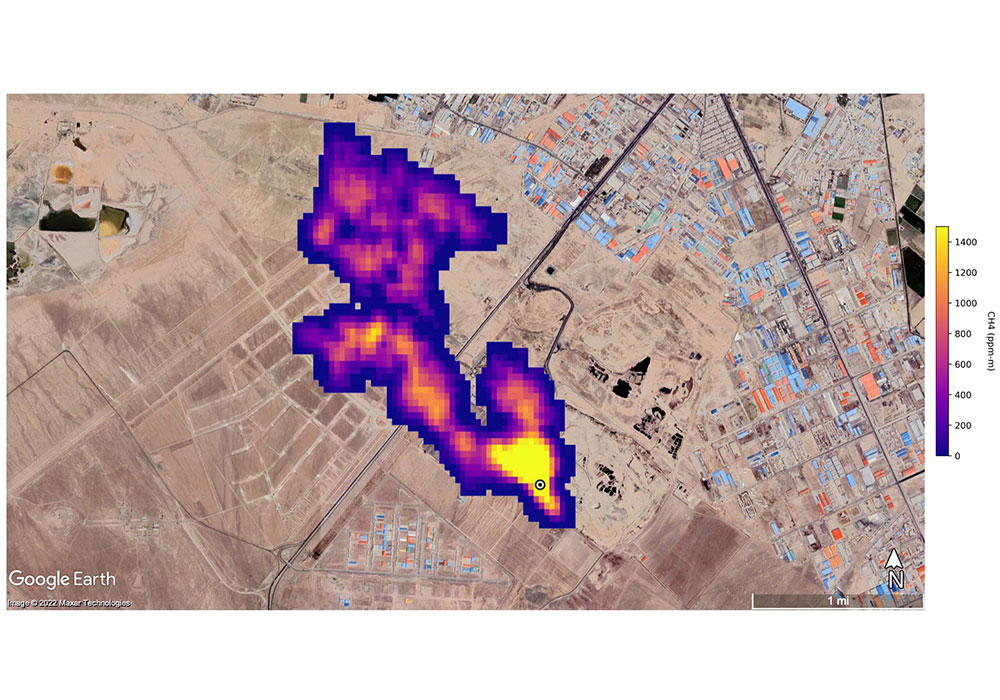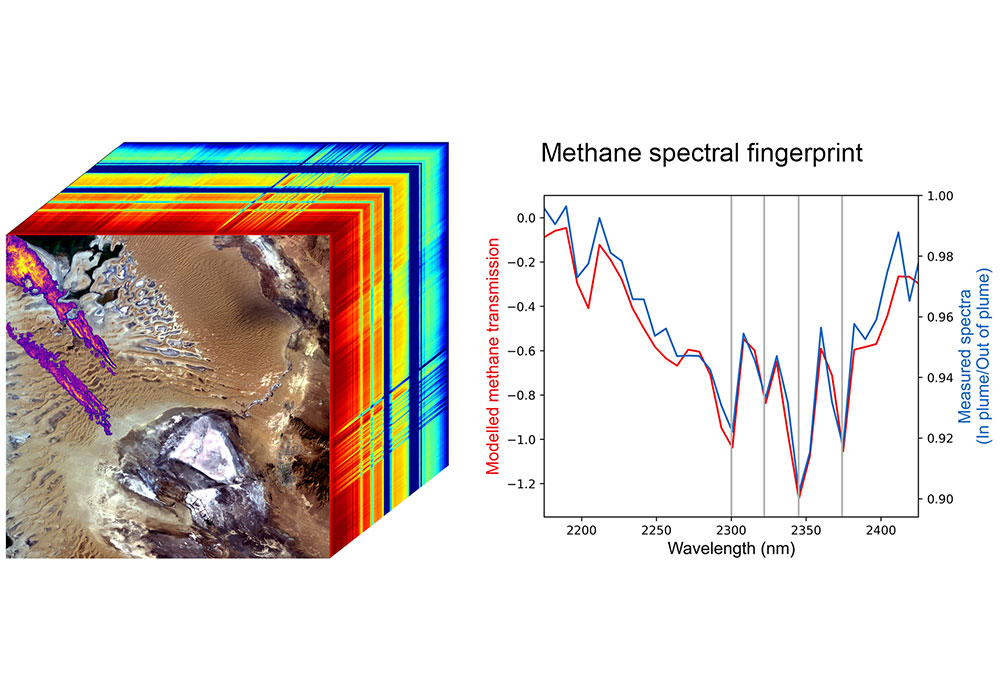
A methane plume at least 3 miles (4.8 kilometers) long billows into the atmosphere south of Tehran, Iran. The plume, detected by NASA’s Earth Surface Mineral Dust Source Investigation mission, comes from a major landfill, where methane is a byproduct of decomposition.
Credits: NASA/JPL Caltech

The cube (left) shows methane plumes (purple, orange, yellow) over Turkmenistan. The rainbow colors are the spectral fingerprints from corresponding spots in the front image. The blue line in the graph (right) shows the methane fingerprint EMIT detected; the red line is the expected fingerprint based on an atmospheric simulation.
Credits: NASA/JPL Caltech
